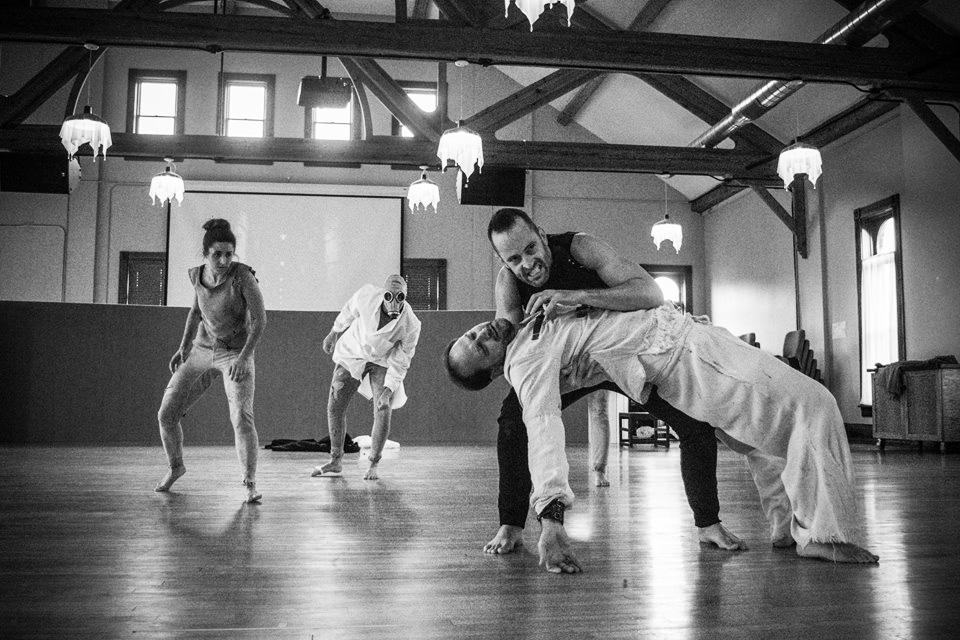On Saturday, Oct. 21, a peculiar play haunted the Rozsa Theatre, a new rendition of “Dracula.” It was put on by the PUSH Physical Theatre, who use their bodies as a means to convey the narrative in each of their plays, similar to interpretive dance, while also using high technical skill in sound and lighting. There were very few actual props, as many of the performers used themselves for hat racks, tables and chairs. The use of a projector provided all the backgrounds for the scenes, even allowing a small bit of animation when needed to explain concepts that are too difficult to explain with dance.
The plot of the play itself very loosely follows a similar framework, even trying to emulate the original storytelling style seen in the original material through the use of the Doctor’s log entries. The play takes place mainly in an asylum, as the Doctor tries to save the Maiden’s life since she has been fed on by The Master (Dracula) every night. Dracula also communicates with an insane man named Renfield, who seeks eternal life and power through vampirism. The play is centered around Renfield as he tries to contend with his vampire-induced insanity from an amulet he found in some Transylvanian ruins. He seems to be able to communicate with Dracula due to this amulet in his possession. Using his mental communication with Dracula, he becomes an invaluable ally to the Doctor and the Maiden’s fiancé as they try to protect her from Dracula’s wrath. The play tells the story from an intriguing, albeit confusing, new perspective when compared to the novel that it is based on.
“Dracula” is a Gothic horror novel written in the late 19th century by Bram Stoker. The plot of the book is told interestingly as well, as it is told mainly in epistolary form. Epistolary stories are told through documents, such as letters, diary entries and news articles. It follows the story of the titular Dracula through the documents of various protagonists as he vacates his Transylvania estate for England. The vampiric lord focuses on expanding his power into London, using aliases and his immense fortune to secretly buy up property so that he may rest in between his feedings easily. He even brings 50 boxes of Transylvanian dirt to provide him with a way to regain his strength in his new Londonian lairs. Once in London, Dracula finds he is drawn to Lucy, the fiancée of a real estate owner he dealt with. Lucy eventually dies from blood loss due to Dracula feeding off of her, which the vampire hunter Van Helsing tries to thwart. After realizing that Dracula has been using boxes of dirt to rejuvenate himself, Van Helsing and a group of Lucy’s friends and family set out to sanctify all 50 boxes scattered throughout London before attempting to strike at Dracula himself.
Overall, the play tries a new way to convey a story similar to Bram Stoker’s “Dracula” with mixed results. Their focus on using a sort of interpretative dance to explain the plot of the play was hindered by some superfluous movements. Confusion about the plot was seen even in some who had read the classic novel and speculation was common during intermission as well as even after the play had concluded. There were even questions about what time period the play was set in, as the first five to ten minutes were used to explain the altered myth of Dracula through a three-dimensional projector while the rest of the play seemed more akin to the late 19th Century. The use of interpretive dance may be one of the few unique selling points that would warrant a viewing.





